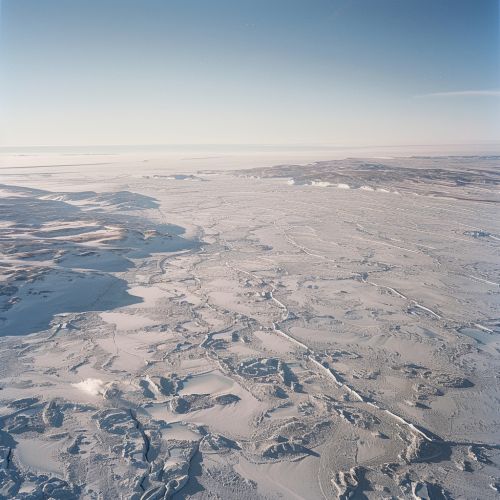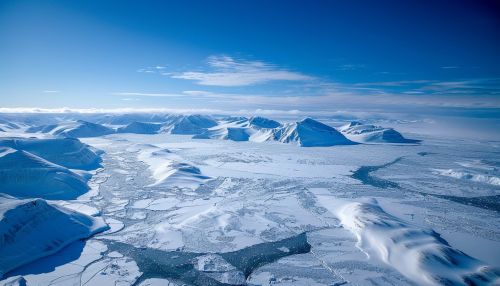Dronning Maud Land
Geography
Dronning Maud Land (DML) is a region of Antarctica, named after Queen Maud of Norway. It is located between 20° west and 45° east, and is approximately 2.7 million square kilometers in size. The region is characterized by its ice-covered terrain, which is part of the larger East Antarctic Ice Sheet.


The region is divided into the Eastern and Western areas, separated by the Jutulstraumen Glacier. The Eastern area is predominantly high plateau, while the Western area is more mountainous, with the Maudheimvidda plateau and the Sør Rondane Mountains being notable features.
Climate
The climate of Dronning Maud Land is classified as a polar climate, characterized by its extremely low temperatures, strong winds, and limited precipitation. The average annual temperature is around -20°C, but can drop as low as -60°C during the winter months. Precipitation is primarily in the form of snow, contributing to the region's extensive ice coverage.
Flora and Fauna
Due to its extreme climate and inhospitable conditions, Dronning Maud Land is largely devoid of terrestrial flora and fauna. However, the surrounding Southern Ocean is home to a variety of marine life, including several species of krill, toothfish, and minke whales. The region is also frequented by various species of birds, such as the emperor penguin and the snow petrel.
History
Dronning Maud Land was first sighted in 1820 by the Russian expedition led by Fabian Gottlieb von Bellingshausen. However, it was not until the Norwegian expedition of 1930 that the region was named and claimed for Norway. Since then, Dronning Maud Land has been a site of international scientific research, with various countries establishing research stations within the region.
Research Stations
There are several research stations in Dronning Maud Land, established by various countries for the purpose of scientific research. These include the Norwegian Troll Station, the German Neumayer-Station III, and the Japanese Showa Station. These stations conduct research in various fields, including glaciology, meteorology, and biology.
